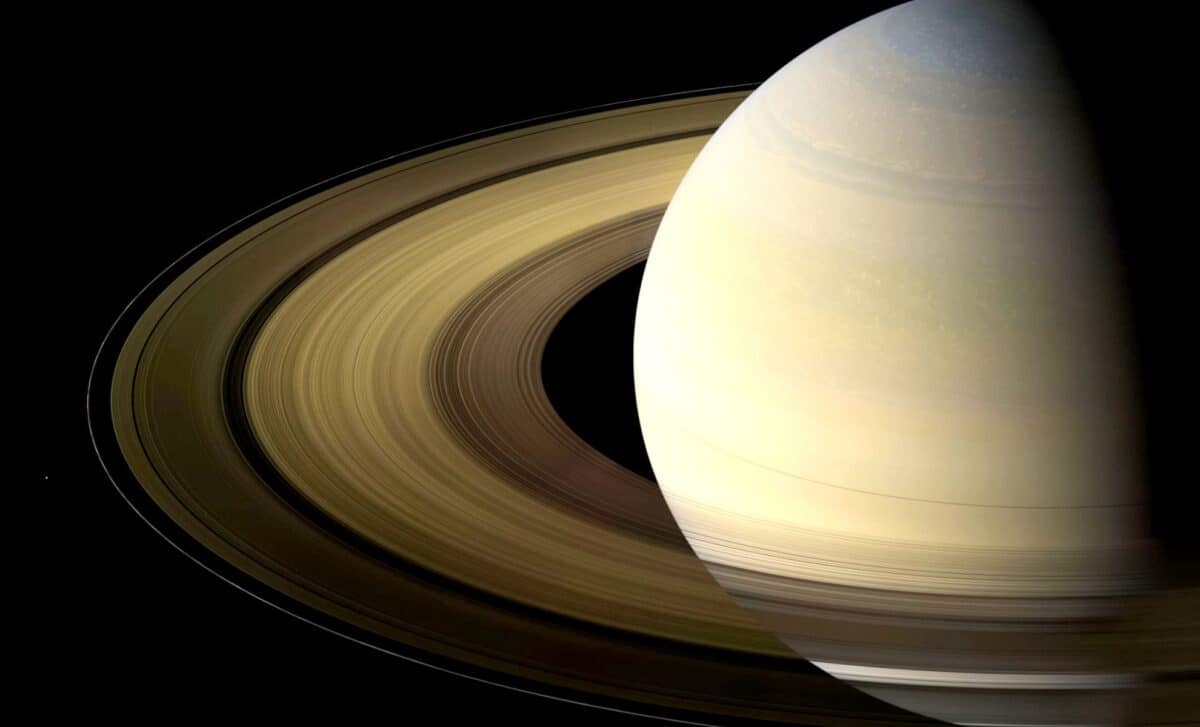This weekend, stargazers will have a rare opportunity to see Saturn in a way few have before: with its iconic rings almost entirely invisible. As explained in The New York Times, this is due to a phenomenon called a ring-plane crossing, Saturn’s rings will appear extremely narrow, making the planet seem as though it has lost its most famous feature. While the rings won’t disappear completely, this event provides a unique chance to observe Saturn in a new light.
Why Saturn’s Rings Appear to Disappear
The reason Saturn’s rings seem to vanish during this event is simple but captivating: the planet’s axis is tilted, much like Earth’s. Saturn takes nearly 30 years to orbit the sun, and during that time, its rings shift in relation to Earth. Every 13 to 16 years, Saturn’s rings align edge-on to Earth, making them appear extraordinarily thin and almost invisible. According to Damian Peach, a renowned astrophotographer:
“Saturn is a spectacular object to look at.” He added, “Even with small telescopes, you can see the rings.”
Ring-plane crossings happen in cycles, but the timing and visibility vary. The last visible crossing of Saturn’s rings occurred in 1995-96, and previous ones in 2009 and 2023 were obscured by sunlight. The phenomenon also briefly took place in March this year but was rendered invisible due to the brightness of the sun. The next crossing after this weekend won’t occur until 2038, giving this event a special place for those eager to witness the gas planethe in this rare state.
 Saturn’s rings, observed by the Cassini spacecraft. Credit: NASA/JPL-Caltech/Space Science Institute
Saturn’s rings, observed by the Cassini spacecraft. Credit: NASA/JPL-Caltech/Space Science Institute
A Moment to Study Saturn’s Faint E-Ring
While the apparent disappearance of Saturn’s rings is a visual curiosity, it also serves a scientific purpose. During a ring-plane crossing, the lack of glare from the rings allows astronomers to focus on the faint outermost ring, known as the e-ring, which is largely invisible during most of the year.
According to Philip Nicholson, an astrophysicist at Cornell University, this is the perfect opportunity to study the e-ring in detail, especially its composition. The e-ring is thought to be created by ice plumes from the sixth planet’s moon Enceladus, and scientists are hoping to detect carbon atoms in the vaporous material to better understand the moon’s potential habitability.
Nicholson’s team will be using the James Webb Space Telescope to observe the crossing and study the light reflected from the e-ring. Their goal is to gather evidence that could support the theory that Enceladus harbors an underground ocean beneath its icy crust, an ocean that may be capable of supporting life.
A stunning view of Saturn captured by the James Webb Space Telescope — showcasing the planet’s golden rings and breathtaking beauty in incredible detail! pic.twitter.com/qJX8kQXLOn
— Black Hole (@konstructivizm) November 4, 2025
When and How to Observe the Event
As stated by the New York Times, the ringed planet will be visible in the southeastern sky after sunset on Friday, Saturday, and Sunday. The rings will appear narrowest on Saturday evening at around 7 p.m. Eastern, just an hour after the planet rises. However, it’s crucial to catch the planet before 3:30 a.m. local time, when the planet will set below the horizon.
Even though the rings will be almost edge-on, Saturn’s signature rings will still be visible—albeit much more subtle than usual. While the event won’t last long, it’s an exciting moment for amateur astronomers to experience a rare aspect of one of the solar system’s most iconic planets. And with the rings slowly widening over the next few months, Saturn will gradually return to its familiar.

